 W
WAn alcazaba, alcáçova or alcassaba is a Moorish fortification in Spain and Portugal. The word derives from the Arabic word al-qaṣabah (القَصَبَة), a walled fortification in a city.
 W
WAn alcázar is a type of Moorish castle or palace in Spain and Portugal built during Muslim rule although the term is also used for many medieval castles built by Christians on earlier Roman, Visigothic or Moorish fortifications. Most of the alcázars were built between the 8th and 15th centuries. Many cities in Spain have an alcázar. The term is frequently used as a synonym for castillo or castle; palaces built by Christian rulers were also often called alcázars.
 W
WThe Aljafería Palace is a fortified medieval palace built during the second half of the 11th century in the Taifa of Zaragoza in Al-Andalus, present day Zaragoza, Aragon, Spain. It was the residence of the Banu Hud dynasty during the era of Abu Jaffar Al-Muqtadir. The palace reflects the splendour attained by the Taifa of Zaragoza at the height of its grandeur. It currently contains the Cortes of the autonomous community of Aragon.
 W
WThe Alcazaba of Almería is a fortified complex in Almería, southern Spain. The word alcazaba, from the Arabic word, signifies a walled fortification in a city.
 W
WThe Alcazaba of Antequera is a Moorish fortress in Antequera, Spain. It was erected over Roman ruins in the 14th century to counter the Christian advance from the north.
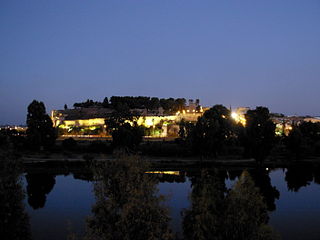 W
WThe Alcazaba of Badajoz is an ancient Moorish citadel in Badajoz, Extremadura, western Spain. The alcazaba as it now appears was built by the Almohads in the 12th century, although it probably existed from the 9th century, when Badajoz was founded. In the 11th and 12th centuries it was the residence of the rulers of the taifa of Badajoz.
 W
WCastle Alcázar of Segorbe was an alcázar located on the slopes of Sopeña in the town of Segorbe, in the Valencian Community of Spain. Very little remains of the original alcázar, but the large complex was a residence of lords, dukes and kings for over a millennium.
 W
WThe Castle of Burgos was a castle and alcázar, located in the city of Burgos, in the hill of San Miguel to 75 metres (246 ft) above the city and to 981 metres (3,219 ft) above the sea. This hill was the subject of archaeological surveys by General Centeno in the years 1925 and 1926 trying to find Napoleonic military files from when the French in their retreat blew up the fortress. According to the results obtained in this excavation the origin of the castle dates to the Visigoths, and its oldest parts, to the Romans.
 W
WThe Castle of Jimena de la Frontera is a castle located in Jimena de la Frontera, Spain. It was declared Bien de Interés Cultural in 1931.
 W
WThe Alcázar of Jerez de la Frontera is a former Moorish alcázar, now housing a park, in Jerez de la Frontera, Andalusia, Spain. It was declared a Bien de Interés Cultural in 1931.
 W
WThe Alcazaba is a palatial fortification in Málaga, Spain. It was built by the Hammudid dynasty in the early 11th century.
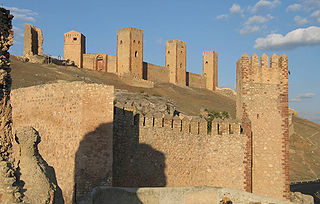 W
WThe Castle of Molina de Aragón is a fortification in Molina de Aragón, Castile-La Mancha, Spain. It was declared Bien de Interés Cultural in 1931.
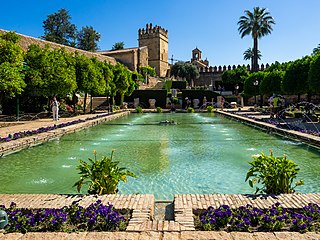 W
WThe Alcázar de los Reyes Cristianos, also known as the Alcázar of Córdoba, is a medieval alcázar located in the historic centre of Córdoba, next to the Guadalquivir River and near the Grand Mosque. The fortress served as one of the primary residences of Isabella I of Castile and Ferdinand II of Aragon.
 W
WThe Royal Alcázar of Madrid was a fortress located at the site of today's Royal Palace of Madrid, Madrid, Spain. The structure was originally built in the second half of the ninth century by the Muslims, then extended and enlarged over the centuries, particularly after 1560. It was at this time that the fortress was converted into a royal palace, and Madrid became the capital of the Spanish Empire. Despite being a palace, the great building kept its original title of Alcázar.
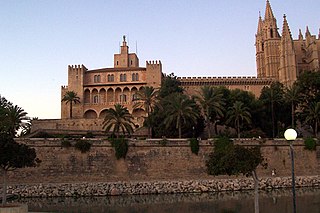 W
WThe Royal Palace of La Almudaina is the Alcázar of Palma, the capital city of the Island of Majorca, Spain.
 W
WSagunto Castle is a fortress overlooking the town of Sagunto, near Valencia in Spain. The site's history extends back over two thousand years and includes Iberian, Roman and medieval remains. During the Islamic period, the castle was known as Murbĩtar and Morvedre. The castle was declared a National Monument in 1931.
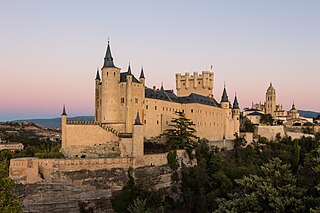 W
WThe Alcázar of Segovia is a medieval castle located in the city of Segovia, a World Heritage Site by UNESCO. Rising out on a rocky crag above the confluence of two rivers near the Guadarrama mountains, it is one of the most distinctive castle-palaces in Spain by virtue of its shape – like the bow of a ship. The alcázar was originally built as a fortress but has served as a royal palace, a state prison, a Royal Artillery College and a military academy since then. It is currently used as a museum and a military archives building.
 W
WThe Royal Alcázars of Seville, historically known as al-Qasr al-Muriq and commonly known as the Alcázar of Seville, is a royal palace in Seville, Spain, built for the Christian king Peter of Castile. It was built by Castilian Christians on the site of an Abbadid Muslim alcazar, or residential fortress destroyed after the Christian conquest of Seville. The palace is a preeminent example of Mudéjar architecture in the Iberian Peninsula but features Gothic, Renaissance and Romanesque design elements from previous stages of construction. The upper storeys of the Alcázar are still occupied by the royal family when they are in Seville, and are administered by the Patrimonio Nacional. It was registered in 1987 by UNESCO as a World Heritage Site, along with the adjoining Seville Cathedral and the General Archive of the Indies.
 W
WThe Alcázar of Toledo is a stone fortification located in the highest part of Toledo, Spain. Most of the alcázar was rebuilt, or restored, between 1939 and 1957 after the Siege of the Alcázar during the Spanish Civil War.